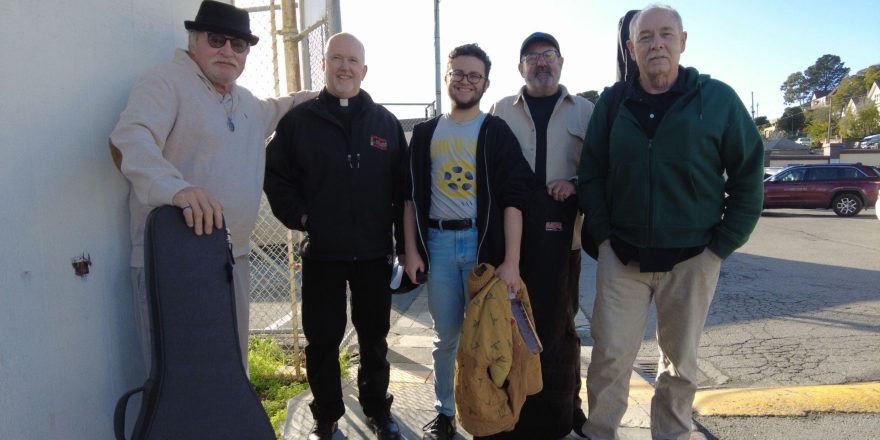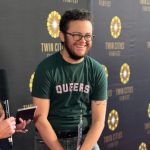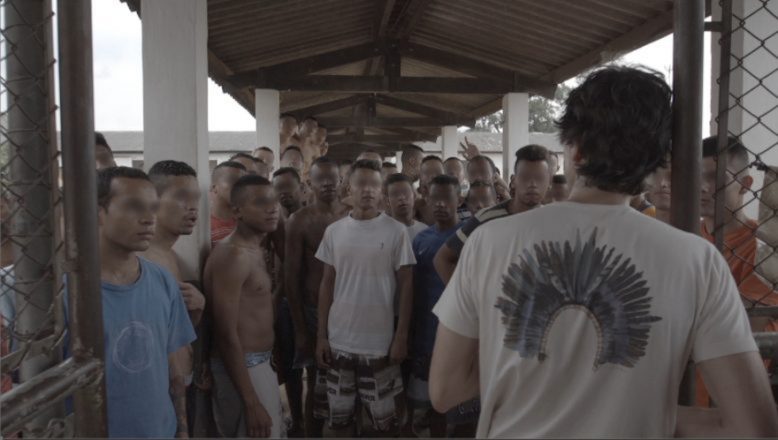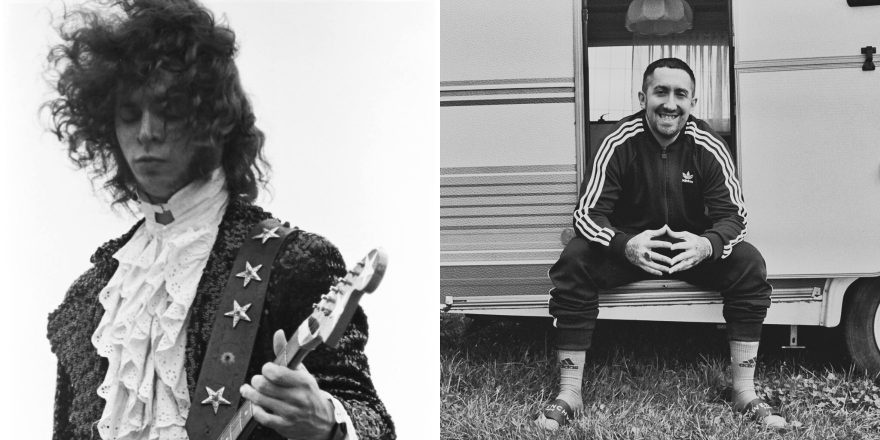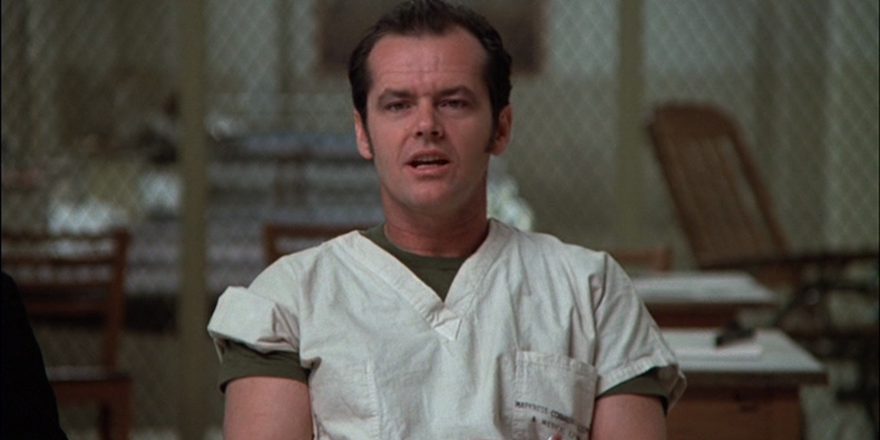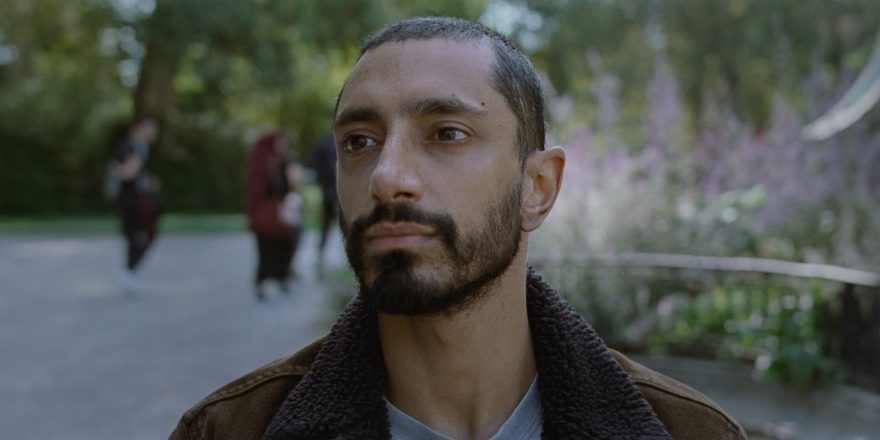My first day in San Quentin was filled with hugs.
We walked the yard in street clothes, my cinematographer and I trailing with handheld equipment behind our documentary subjects, Dwight, Billy and Richie. It turns out that walking a prison yard with guys who have gotten out is what I imagine hanging out with a movie star to be like.
All three of our subjects were paroled in 2020: Richie after 34.5 years, Dwight after 18 years and Billy after 17 years of incarceration. Each of them spent time at several California prisons, but they all finished their sentences together at San Quentin, and on the day of their return were greeted with joy by old friends.
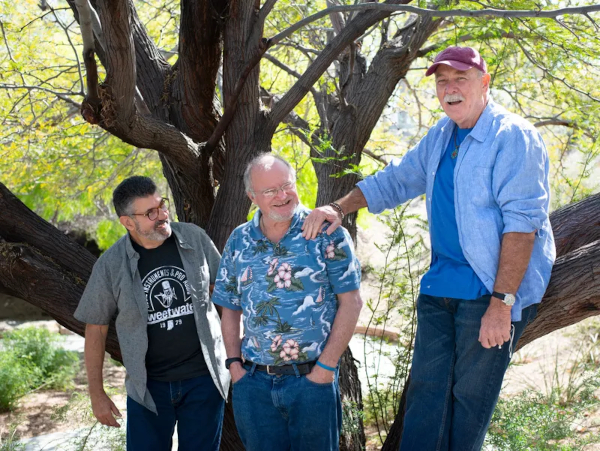
Richie and Dwight started their band Quentin Blue in 2014 from inside San Quentin’s walls, Billy joined in 2018, and they played with a host of other men while they were in the prison – men they were now seeing for the first time since their release.
I was connected with the band after I took a 40-hour restorative justice training with Insight Prison Project. I invited one of the returned citizen speakers to a screening of my first feature, Addict Named Hal, at Dances with Films in Los Angeles. He hadn’t seen a film in theaters since the 1990s, and he needed a ride. That ride was Dwight. Dwight thought he was pitching me on using the band’s music in an upcoming movie, but when he told me Quentin Blue’s story, I immediately thought, “That’s my movie.” Two weeks later, I was sitting at a coffee shop with the three of them, sharing my background and values that made their story important to me, and dreaming about what a documentary process might look like. This meeting happened in August 2021. In May 2022, we did our full shoot of musical performances, interviews and daily life in May 2022 (which included me staying for several days at their sober house for after-hours filming, giving me flashbacks to my own time in a sober house back in 2016). Four months later, after much effort, we were finally allowed to film inside San Quentin.
Richie is famous for saying he doesn’t believe in coincidence, so I won’t let him catch me saying that he, Dwight and Billy were sent to the same transitional housing in Los Angeles – after assuming they would never see each other again post-release – simply by chance. But no matter your belief system, the reunions in the yard were not by chance: they were the result of hard work and coordination between the prison staff, nonprofit allies, parole officers and our crew to bring the stars into alignment.
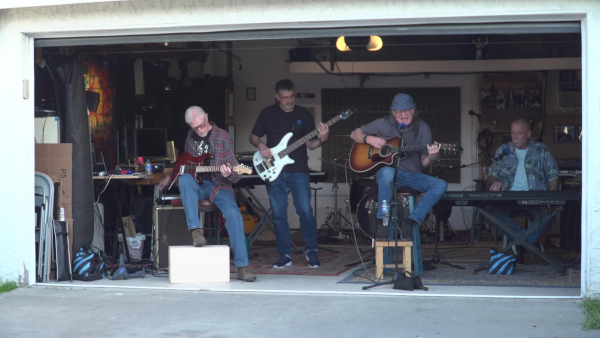
The guys showed me “Studio 17,” the long, very old brick wall where they used to play their original music, sitting on empty five-gallon buckets. It took us at least half an hour to get there from the other side of the yard, because many times we would pass a man who suddenly realized he was looking at his old buddy, walking the yard in street clothes and looking pretty damn good, and we had to stop for more hugs.
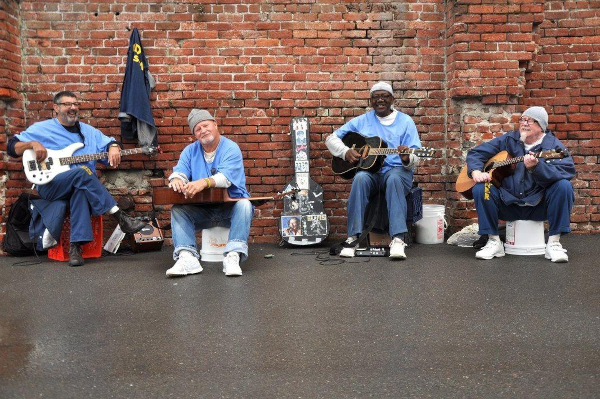
Not only did I get to see my subjects in the place they had met and formed the band whose story I was telling, I also got to see them become mentors for men who used to be their peers. They answered questions about work, family, retirement plans, housing, parole board hearings and reentry programs. Our guys asked for their friends’ release dates, and said they’d be praying for them. When we moved from the yard to the cell block, I lost Dwight for a full 10 minutes as he stood in front of a cell, giving concrete advice to an incarcerated friend through the bars.
I knew a visit to San Quentin would be impactful for the documentary I was making, but I hadn’t been prepared for the impact our presence would have on the people inside. Our subjects were walking hope, and we were the little crew trailing in their wake, trying to capture every piece of advice, and giving validity to the success they were having on the outside.
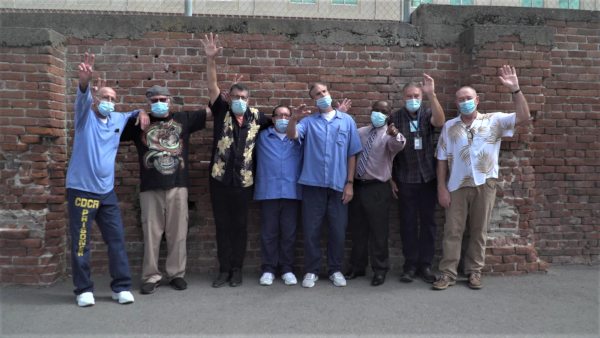
Getting into San Quentin was hard enough the first time, so we tempered our expectations about getting to go back to share the film with the people incarcerated there. But after our first online community screening of Quentin Blue, for people who had financially supported the project, we got an invitation to screen the film inside San Quentin. This idea of going back “behind the wall” had been a vision and hope of ours since the project was conceived.
We, of course, accepted – but this led to some trepidation. The film is vulnerable. Visceral. I ultimately intend Quentin Blue to be healing, but part of the healing process for these men is being accountable for the crimes that earned them their life sentences in the first place – even if we also cover the healing work they have done to earn them their releases, none of which were guaranteed for them as lifers.
San Quentin might be famous to the general “free” population for its violent past, but it’s famous in restorative justice spaces for its rehabilitative programming. In fact, just days before we reentered this space for our premiere, the name was changed from San Quentin State Prison to San Quentin Rehabilitation Center.
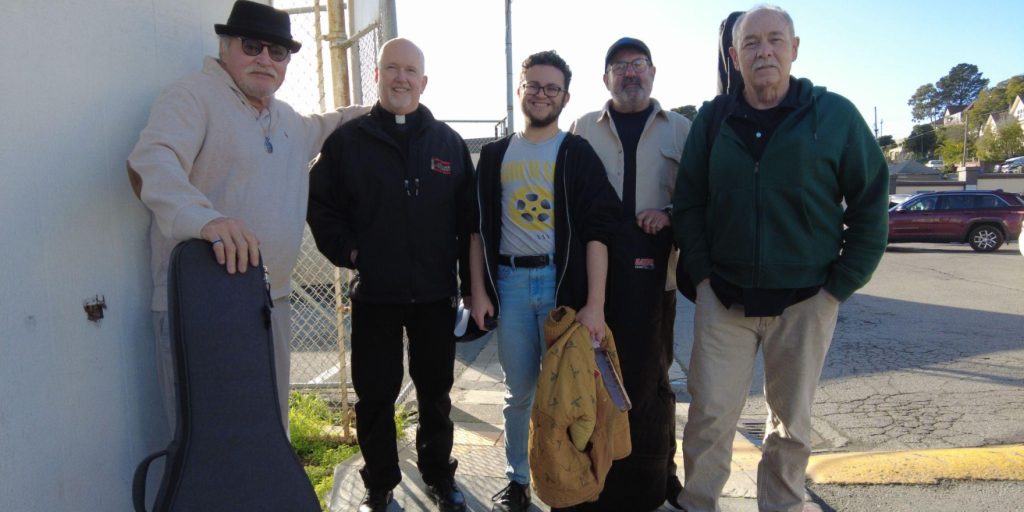
Still, we were nervous about how this audience might react to hearing about the crimes that brought these men to prison. We were subverting prison politics. We entered the space early to connect with old band members and do tech checks. Almost 100 incarcerated individuals – plus prison staff and volunteers, including San Quentin’s new warden – filed into Chapel A. The guys played a few songs, I said a few words and the screening of our 28-minute documentary began.
When the film ended, we walked up to the stage and opened for comments. The very first person out of his chair was a friend from our first visit, who I had since spoken with on the phone, who with tears and emotion in his voice thanked our team for the film’s vulnerability. All of us breathed a sigh of relief.
As a filmmaker, I am drawn to stories of profound change. For me, this is rooted in the way my own life overturned: in January 2016, my fiancé died suddenly of a heart attack, and soon after, I landed myself in inpatient rehab and a recovery house. I now have eight years of sobriety, and I make work about grief, healing, recovery, transformation and restorative justice – about these men whose lives were in upheaval, not only when they were first given their life sentences, but also when they were released from them.
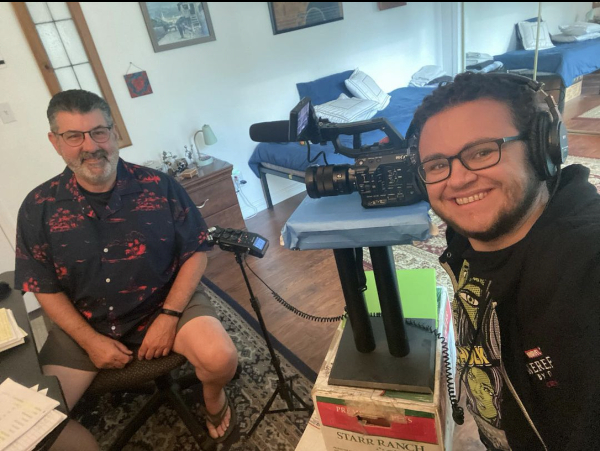
My partner is an executive at a major studio, and it just so happened that our San Quentin screening date was scheduled for the day after one of his big premieres. And so we put on our blazers and walked past red carpets and limos in Westwood, and then drove north to show our documentary to the people inside San Quentin. At the last minute, my partner had to run to the nearest Target, because he’d accidentally worn blue jeans, which visitors aren’t allowed to wear, since the guys inside wear blue. We left these days in awe of just how much the medium of film can hold, and can inspire.
Now, our hope is that we can use this film to shepherd more incarcerated people through their reentry journeys, in concert with Quentin Blue’s mission of supporting reentry through their music. We hope to expand the film into a feature that dives deeper into restorative justice for people who haven’t yet been exposed to this concept. We hope that incarcerated people can see returned citizens forming community and being welcomed as neighbors and valued members of society.
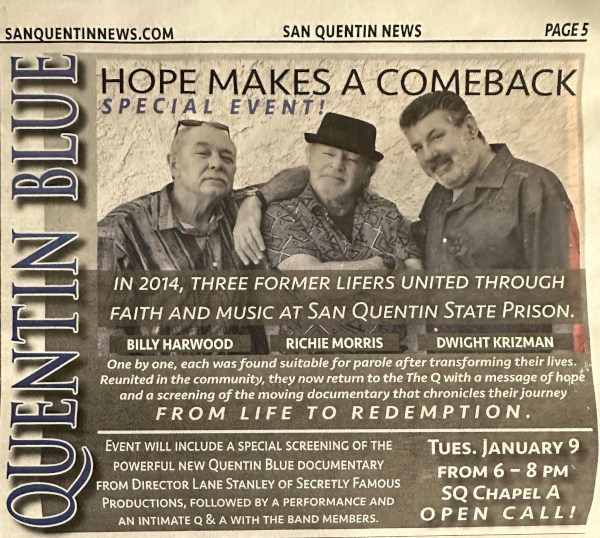
We have precious few hopeful stories of returned citizens coming home from prison, and little representation of the friendships and healing that are possible.
We’d like to change that.


